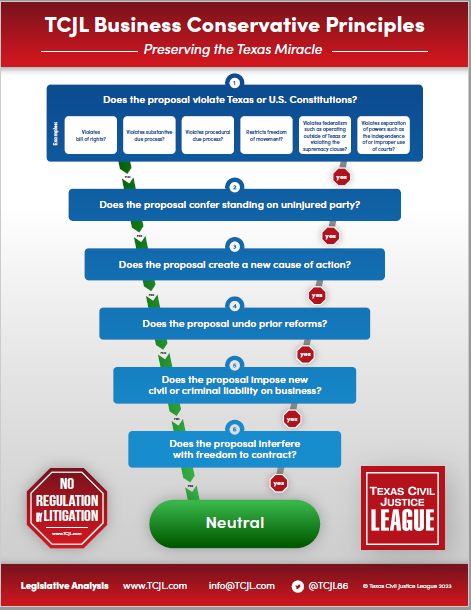 In a case making its second appearance from the Dallas Court of Appeals, the Texas Supreme Court has for the second time reversed the court of appeals’ decision in a premises liability case. SCOTX had previously sent the case back for reconsideration in light of two recent decisions involving Chapter 95, CPRC.
In a case making its second appearance from the Dallas Court of Appeals, the Texas Supreme Court has for the second time reversed the court of appeals’ decision in a premises liability case. SCOTX had previously sent the case back for reconsideration in light of two recent decisions involving Chapter 95, CPRC.
Weekley Homes, LLC v. John Paniagua; and Hermelinda Maravilla Corona, Jose Camerino Maravilla, Sr., and Margerita Maravilla, Individually, as Personal Representatives of the Estate of Jose Camerino Maravilla, Deceased, and as Next Friend of S.L.M.S., E.H., L.A.S., and J.J.M., Minors(23-0032; June 21, 2024) arose from the electrocution of two employees of an independent contractor hired by Weekley Homes to do framing and other work on Weekley’s new townhome construction project. While moving a metal scaffolding on a wet driveway, one worker was killed and the other injured by an electric shock, which plaintiffs allege was either caused by lightning or the proximity of the scaffolding to a T-pole that provided electricity to the site. Plaintiffs sued Weekley for negligence, gross negligence, and premises liability.
Weekley moved for summary judgment under Chapter 95, CPRC, which shields a property owner from claims for personal injury, death, or property damage by independent contractors and subcontractors arising from the condition or use of an improvement to real property where the contractor constructs, repairs, renovates, or modifies the improvement (Chapter 95 was a key part of the 1995 tort reform package of legislation). Weekley’s summary judgment motion relied on the plaintiffs’ live petition, which said only that the contractor’s crew “were working” at the driveway and the townhome construction, to satisfy the “condition or use of an improvement to real property” prong of the Chapter 95 test (ownership is the other). The trial court granted Weekley’s summary judgment motion on all claims. The Dallas Court of Appeals affirmed as to the gross-negligence claim but reversed as to the negligence and premises liability claims on the basis that Weekley “had not conclusively established Chapter 95’s applicability” because it relied solely on statements in the plaintiffs’ pleading, which the court held were not evidence.
In a per curiam opinion, SCOTX reversed, holding that while pleadings do not generally constitute summary judgment evidence (and a party’s own pleadings never do), “courts may grant summary judgment based on deficiencies in an opposing party’s pleadings” [citations omitted]. Moreover, “[A] summary-judgment movant may also rely on allegations in a petition ‘as truthful judicial admissions’” as SCOTX held in Regency Field Servs., LLC v. Swift Energy Operating, LLC, 622 S.W.3d 807 (Tex. 2021). Weekley was thus entitled to rely on the plaintiffs’ live pleading to meet its initial evidentiary burden under Chapter 95. Since the court of appeals did not have the benefit of Regency, SCOTX sent the case back for reconsideration. It also pointed out that recent Chapter 95 precedent, specifically Energen Res. Corp v. Wallace, 642 S.W.3d 502 (Tex. 2022) (a case we reported on in March) and Los Compadres Pescadores, LLC v. Valdez, 622 S.W.3d 771 (Tex. 2021), should assist the court of appeals in resolving the substantive Chapter 95 issues as well.
On remand, the court of appeals’ analysis turned on two questions: (1) was the concrete driveway an “improvement” for Chapter 95 purposes; and (2) did the plaintiffs’ live pleading constitute a judicial admission that plaintiffs were working on the “improvement.” In answering the first question, the court conducted a close reading of Energen and Los Compadres. Weekley contended that the townhomes, which plaintiffs’ employer contracted to build, and the cement driveway, on which plaintiffs were injured, constituted a single “improvement.” Consequently, plaintiffs’ claim arose “from the condition or use of an improvement to real property where the contractor or subcontractor constructs, repairs, renovates, or modifies the improvement.” In Los Compadres, SCOTX stated, “If a dangerous condition, by reason of its proximity to an improvement, creates a probability of harm to one who ‘constructs, repairs, renovates, or modifies’ the improvement in an ordinary manner, it constitutes a condition of the improvement itself.” 622 S.W.3d at 785-86 (emphasis added).
Weekley’s supplemental brief argued that the plaintiffs’ pleading admitted “that the townhomes and the adjacent driveway are the same improvement for section 95.002(2) purposes” and should be considered as summary judgment evidence under Regency. While agreeing with Weekley on this point, the court of appeals, noting that Weekley’s quotation of the pleading was edited to add language tying the plaintiffs’ work on the driveway to their work on the townhome, disagreed that the driveway and the townhome were a single improvement. The plaintiffs’ unedited petition stated only that they were moving scaffolding and stepped on an energized wet concrete driveway, not that the driveway was part of the “townhome work-site premise.” While Weekley’s edited version may suggest proper inferences from the plaintiffs’ statements, the summary judgment standard “requires that we indulge every reasonable inference in the nonmovant’s favor” (citation omitted). Moreover, “judicial admission must be ‘clear and unequivocal’ to have conclusive effect” (citation omitted). The court thus “decline[d] to conflate the driveway in question and Weekley’s term ‘the townhome work-site premise.”
Finally, the court cited Los Compadres in support of their conclusion that the driveway and townhome were different improvements. In that case, SCOTX determined that a subcontractor hired to construct pilings should not be considered as involved in the construction of the foundation or the building, as the owner argued. Similarly, the court reasoned, the subcontractor here was hired to work on the townhomes, not the cement driveway. The condition that caused the injury was the energized driveway, not the energized townhome. In other words, under SCOTX’s definition of “condition,” Weekley failed to show how the energized driveway “affected the state of being” of the townhome. The court thus concluded that “(1) plaintiffs’ petition did not constitute a judicial admission that the energized concrete driveway was a dangerous condition of the improvement [plaintiffs] were constructing, repairing, renovating, or modifying, and (2) Weekley did not meet its burden to establish it was entitled to judgment as a matter of law regarding that requirement.” The trial court thus erred when it granted Weekley’s summary judgment motion as to Chapter 95’s applicability.
In another per curiam opinion, SCOTX reversed again. Quoting Ineos USA, LLC v. Elmgren, 505 S.W.3d 42, 51 (Tex. 2015) for the proposition that “Chapter 95 only applies when the injury results from a condition or use of the same improvement on which the contractor (or its employee) is working when the injury occurs,” the Court reiterated that “‘improvement’ means ‘all additions to the freehold except for trade fixtures [that] can be removed without injury to the property.’” Consequently, “[i]f a dangerous condition, by reason of its proximity to an improvement, creates a probability of harm to one who ‘constructs, repairs, renovates, or modifies’ the improvement in an ordinary manner, it constitutes a condition of the improvement itself” (quoting Los Compadres Pescadores, L.L.C. v. Valdez, 622 S.W.3d 771, 785-86 (Tex. 2021)). The court of appeals thus erred when it concluded that Weekley’s summary judgment evidence, which included the allegations in the plaintiff’s petition, did not “conclusively establish that the wet driveway was a condition of the townhome on which the crew was hired to work.” SCOTX remanded to the court of appeals for consideration of plaintiff’s other unrelated issues.












